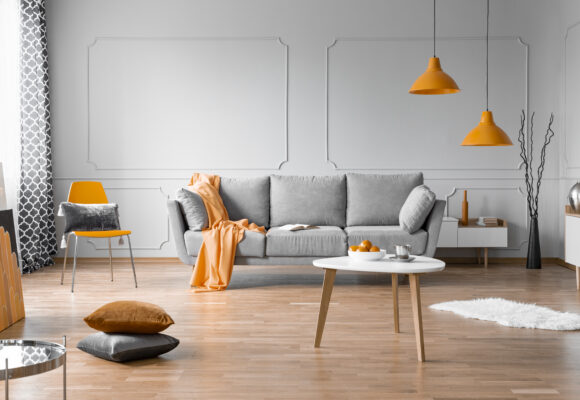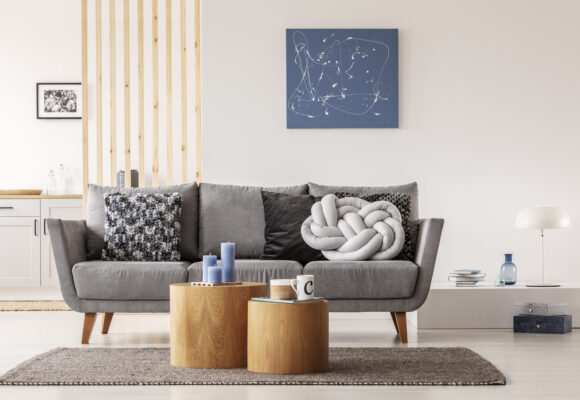How do I prevent glare and shadows when lighting a room?
Preventing glare and shadows when lighting a room is essential for creating a comfortable and visually pleasing environment. Glare can cause discomfort and eye strain, while shadows can obscure visibility and diminish the functionality of the space. Here’s how you can effectively minimise glare and shadows in your home:
Use Diffused Lighting
One of the most effective ways to reduce glare is by using diffused lighting. Diffused light is soft and evenly distributed, minimising harsh contrasts and shadows. You can achieve diffused lighting by opting for fixtures with frosted or textured glass, or by using lampshades that soften the light emitted by bulbs. Pendant lights, chandeliers, and wall sconces with diffused shades can provide pleasant ambient lighting without causing glare.
Opt for Directional Lighting
Directional lighting allows you to focus the light precisely where you need it, reducing the risk of glare and shadows. Adjustable track lighting, recessed spotlights, and wall-mounted adjustable fixtures are great options for providing task lighting without creating unwanted glare. By directing the light towards specific areas, you can enhance visibility while minimising reflections and shadows.
Use Multiple Light Sources
Layering different types of lighting—ambient, task, and accent—can help you control the intensity and direction of light more effectively. Ambient lighting provides overall illumination, while task lighting focuses on specific activities like reading or cooking. Accent lighting highlights architectural features or artwork. By combining these layers strategically, you can reduce glare and shadows while creating a balanced and visually appealing atmosphere.
Choose the Right Bulbs
The type of bulb you choose can significantly impact the quality of light and its potential to create glare or shadows. LED bulbs are an excellent choice for reducing glare, as they produce directional light and emit less heat compared to traditional incandescent bulbs. Additionally, choosing bulbs with a lower wattage or a warmer colour temperature can help create a softer, more comfortable lighting environment.
Position Light Fixtures Thoughtfully
The placement of light fixtures plays a crucial role in preventing glare and shadows. Avoid placing fixtures directly above reflective surfaces like glass tables or glossy countertops, as this can create glare. Instead, position fixtures at angles that direct light away from these surfaces. In rooms with tall ceilings, consider installing lights at different heights to evenly distribute light and minimise shadows.
Use Dimmer Switches
Dimmer switches allow you to adjust the brightness of your light fixtures, giving you greater control over the intensity of light in a room. This flexibility can help you reduce glare when needed, especially during tasks that require focused attention. Dimmers also allow you to create different moods and atmospheres, enhancing the overall comfort and functionality of your space.
Consider the Room’s Colour Scheme
The colours used in a room’s decor can influence how light interacts with surfaces, affecting the perception of glare and shadows. Lighter colours reflect more light, while darker colours absorb it. If you have light-coloured walls and furnishings, you may need fewer light fixtures to achieve adequate illumination. On the other hand, darker rooms may require additional lighting to prevent shadows and maintain a bright, inviting atmosphere.
Regularly Clean & Maintain Fixtures
Dust and dirt on light fixtures can contribute to glare by diffusing light unevenly. Regular cleaning and maintenance of your fixtures can help ensure that light is emitted evenly, reducing the risk of glare and enhancing the quality of light in your home. Clean fixtures also allow bulbs to operate at their optimal efficiency, prolonging their lifespan and reducing energy costs.
Seek Professional Advice
If you’re unsure about the best lighting solutions for your home or struggle with persistent glare and shadows despite your efforts, consulting with a professional lighting designer can be beneficial. Lighting designers can assess your space, recommend appropriate fixtures and placements, and help you create a customised lighting plan that addresses your specific needs and preferences.
Conclusion
In conclusion, preventing glare and shadows when lighting a room requires careful planning, thoughtful selection of fixtures and bulbs, and strategic placement of light sources. By incorporating diffused lighting, directional fixtures, multiple light layers, and adjustable controls, you can create a comfortable, visually appealing, and functional environment in your home.
Paying attention to room colours, cleaning and maintaining fixtures, and seeking professional advice when needed can further enhance the quality of light and overall ambiance. With these tips and considerations, you can effectively minimise glare and shadows, creating a well-lit and inviting space tailored to your lifestyle and aesthetic preferences.




 No products in the basket.
No products in the basket. 
